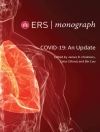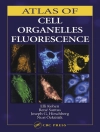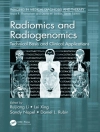<p><strong>Case studies provide a stellar resource for mastering clinical breast tomosynthesis technology</strong></p><p>Digital breast tomosynthesis (DBT), popularly called ‘3D mammography’ is a state-of-the-art breast imaging technology that provides the ability to view inside the breast, layer by layer. Advantages of DBT include elimination of superimposed tissue, improved detection of otherwise hidden lesions, and significantly higher cancer detection rates compared to conventional mammography.</p><p>Although it is increasingly being implemented in imaging centers, hands-on clinical learning tools have been lacking – until now. Written by renowned breast imaging specialists, this multimedia textbook is the most definitive DBT reference available. The first section is dedicated to DBT fundamentals, including physics, reconstruction methods, acquisition parameters, and patient dose and data size considerations. The next two sections are case-based clinical practice presentations, organized by DBT screening and diagnostic components.</p><p><strong>Key Features</strong></p><ul><li>The use of 3D breast imaging to detect and differentiate malignancies from normal and benign findings</li><li>100 case studies include pertinent clinical information, introductory images, and findings labeled on subsequent images with BI-RADS terminology</li><li>Full field digital mammography and/or synthetic 2D mammogram images included in all case studies mirror what is typically encountered in DBT breast-imaging programs</li><li>Clinical pearls on navigating the technology, interpreting images, making diagnoses, and decisions regarding follow-up studies</li><li>Accompanying online videos further elucidate the still images</li></ul><p>This remarkable, interactive reference is a must-have for trainee and practicing radiologists and will also benefit mammography technicians. The detailed case studies and videos demonstrate the full utility of DBT as a screening and diagnostic technology in context with mammography, ultrasound, and MRI of the breast.</p>
Tabla de materias
<p><strong>Part I: Introduction to Clinical Breast Tomosynthesis</strong><br>1 The Physics of Digital Breast Tomosynthesis<br>2 BI-RADS Nomenclature for Mammography and Ultrasound<br><strong>Part II: Cases with Screening Tomosynthesis Evaluation Needing No Further Evaluation</strong><br>3 Fat-Containing Mass on Baseline Mammogram<br>4 Radiolucent Lesions with Calcifications<br>5 Architectural Distortion<br>6 Architectural Distortion on a Full-Field Digital Mammogram<br>7 No Skin Edge<br>8 Grouped Calcifications<br>9 Scattered Masses<br>10 Treated Breast Cancer<br>11 ‘Hairy’ Skin Edge<br>12 Linear Calcifications<br>13 Multiple Masses<br>14 Nonpalpable Mass with Mixed Composition<br>15 Calcifications<br>16 Architectural Distortion<br>17 Oval Mass in High-Risk Patient<br>18 Resolved Clinical Finding<br>19 Breast Reduction Years Ago<br>20 Axillary ‘Calcifications'<br>21 Nonpalpable Mass<br>22 Increased Breast Density<br>23 Possible Architectural Distortion<br>24 Architectural Distortion<br><strong>Part III: Cases with Screening Tomosynthesis Evaluation Needing Further Diagnostic Evaluation</strong><br>25 Mass with Architectural Distortion<br>26 Developing Asymmetry<br>27 High-Density Mass<br>28 Mass on Baseline Mammogram<br>29 Amorphous Calcifications<br>30 Obscured Mass within Dense Breast Tissue<br>31 Mass Only Seen on One View<br>32 Mass on Baseline Mammogram<br>33 Architectural Distortion<br>34 Grouped Amorphous Calcifications<br>35 Architectural Distortion Only Seen on Tomosynthesis<br>36 Small Spiculated Mass<br>37 Mass on High-Risk Screening Mammogram<br>38 Architectural Distortion Best Seen on Digital Breast Tomosynthesis<br>39 Focal asymmetry<br>40 Obscured Mass<br>41 Subtle Mass<br>42 Coarse Heterogeneous Calcifications<br>43 Amorphous Calcifications<br>44 Developing Asymmetry<br>45 Focal Asymmetry with Architectural Distortion<br>46 Circumscribed Mass on Baseline Mammogram<br>47 Two Areas of Architectural Distortion<br>48 Architectural Distortion within Dense Breast Tissue<br>49 Calcifications and Possible Focal Asymmetry<br>50 Developing Asymmetry<br>51 Obscured Mass and Architectural Distortion Findings<br>52 Mass After Reduction Mammoplasty<br>53 Architectural Distortion<br>54 Obscured Mass<br>55 Architectural Distortion<br>56 Linear Calcifications<br>57 Developing Asymmetry<br>58 Enlarging Mass<br>59 Developing Asymmetry in a Patient with Treated Breast Cancer<br><strong>Part IV: Cases with Screening and Diagnostic Tomosynthesis Evaluations</strong><br>60 Circumscribed Mass<br>61 Developing Asymmetry<br><strong>Part V: Cases with Diagnostic Tomosynthesis Evaluation Recalled from Conventional Screening Mammogram</strong><br>62 Possible Focal Asymmetry<br>63 Architectural Distortion within Dense Breast Tissue<br>64 Architectural Distortion with Negative Ultrasound<br>65 Focal Asymmetry with Architectural Distortion<br>66 Focal Asymmetry—One or Two Lesions<br>67 Asymmetry on the Craniocaudal View<br>68 Asymmetry on the Craniocaudal View<br>69 Small Adjacent Masses<br>70 Oval Mass at 6 O’Clock<br>71 Architectural Distortion with Calcifications<br>72 Focal Asymmetry<br>73 Architectural Distortion<br>74 Calcifications with Architectural Distortion<br>75 Asymmetry on the Craniocaudal View<br>76 Linear Asymmetry<br>77 Architectural Distortion<br><strong>Part VI: Cases with Diagnostic Tomosynthesis Evaluation Presenting with Clinical Indication</strong><br>78 Right Axillary Palpable Finding and Left Breast Pain<br>79 Palpable Masses with No Mammographic Correlate<br>80 Palpable Breast Masses<br>81 Asymmetric Breast Tissue or Mass<br>82 New Palpable Finding at Site of a Remote Benign Image-Guided Biopsy<br>83 Palpable Breast Mass<br>84 Palpable Mass on First Mammogram<br>85 Palpable Thickening<br>86 Right Breast Pain<br>87 Breast Pain<br>88 Palpable Axillary Mass<br>89 Spiculated Retroareolar Mass with Linear Calcifications<br><strong>Part VII: Cases with Known Cancer Diagnosis Needing Additional Evaluation</strong><br>90 Oval Mass Seen on Digital Breast Tomosynthesis<br>91 Retroareolar Extension<br>92 Regional Calcifications<br>93 Fine-Linear Branching Calcifications<br>94 Regional Calcifications<br>95 Cancer Occult to Imaging<br><strong>Part VIII: Intervention: Biopsy Using Tomosynthesis or Stereotactic Guidance</strong><br>96 Introduction to Localization and Biopsy Using Tomosynthesis<br>97 Developing Asymmetry<br>98 Spiculated Mass Not Seen on Ultrasound<br>99 Mass with Indistinct Margins<br>100 Heterogeneous Calcifications<br>101 Palpable Spiculated Masses<br>102 Architectural Distortion<br>103 Architectural Distortion</p>












